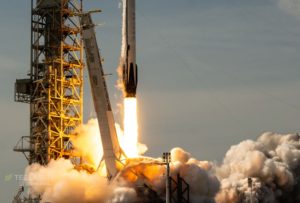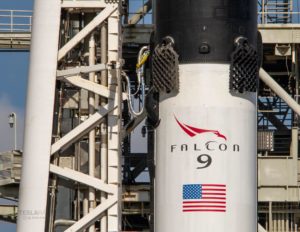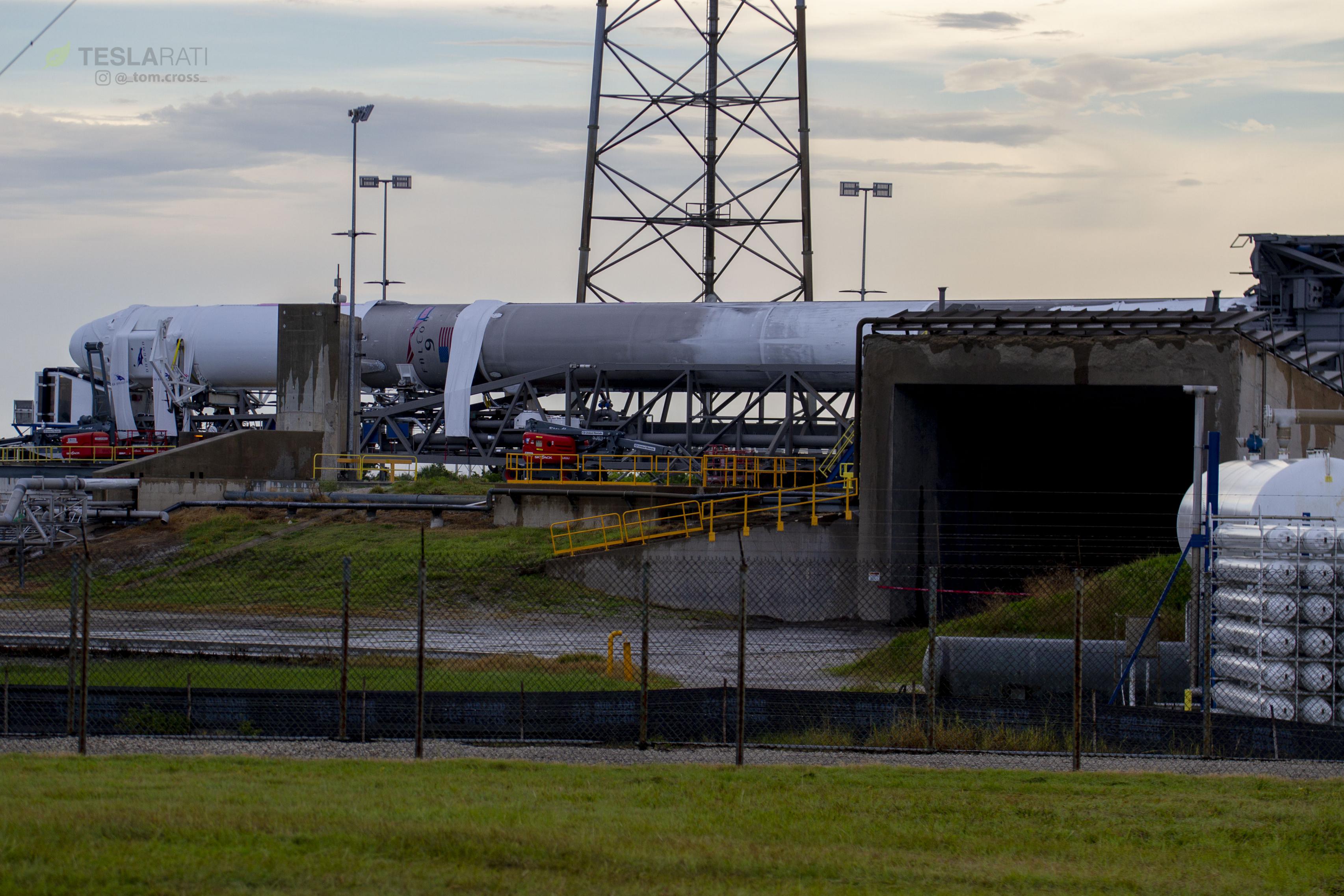

News
SpaceX to test last old-gen Falcon 9’s orbital upper stage lifespan tonight
SpaceX Falcon 9 B1045 is just hours away from completing its second and final mission, a launch that will also signify a swan-song for the reusable rocket company’s Block 4 and older boosters. Not one to let an opportunity go to waste, Elon Musk’s space company intends to do a long coast demonstration of the orbital upper stage once the reused Cargo Dragon spacecraft separates.
Jessica Jensen, SpaceX’s Director of Dragon Mission Management, spoke among a panel of CRS-15 stakeholders on the morning of June 28 and spoke evident pride and confidence in the company’s progress up to this point, with respect to both the mission at hand and SpaceX’s achievements more generally. CRS-15, the third flight-proven Dragon and Falcon 9 launch, is a fitting mission for SpaceX to bring to a close their H1 launch manifest (the 12th of 2018), mainly due to the impressive fact that more than two-thirds of the boosters launched this year have been flight-proven.

Falcon 9 B1045 before its first launch, carrying NASA’s TESS exoplanet observatory, in April 2018. (Tom Cross)
As Jensen rightfully noted, SpaceX completed its first-ever reuse of a recovered Falcon 9 booster scarcely 15 months ago in March 2017, a period in which SpaceX has since completed 26 missions, recovered 16 Falcon 9 and Heavy boosters, and successfully launched 12 flight-proven rocket boosters. At the current rate of launch, SpaceX is likely to smash its previous annual cadence record – 18 in 2017 – with anywhere from 24 to 28 launches this year, with CRS-15 marking a dozen missions in the first half of the year, if successful. As such, simply the launch frequency in the first six months would bring SpaceX to 24 completed missions this year. A slight uptick, perhaps as a result of the rapid reusability of new Block 5 boosters, might allow SpaceX to squeeze in several additional missions.
Critically, Jensen also noted that B1045’s final launch will be significant for a reason other than the fact that it nearly halved the previous record for Falcon 9 booster refurbishment, an accomplishment she ceded to the skill and growing experience of SpaceX’s rocket refurbishment teams of engineers and technicians. Aside from that growing expertise, she stated that
“[CRS-15] will also be the final Block 4 configuration of a Falcon 9 booster that SpaceX flies, so all the boosters from here on out will be the Block 5 version.”
Barring unforeseen design flaws, Falcon 9 Block 5 has the potential to be a game-changer, perhaps allowing SpaceX to finally realize a long-term goal of dramatically lowering the cost of access to orbit with new reliable, reusable rockets. Reported by NASASpaceflight.com to be flying aboard a Block 4 booster, something also confirmed to Teslarati through a separate source, it’s not 100% clear if Jensen’s blanket statement included the upcoming in-flight Crew Dragon abort test, scheduled sometime after the upgraded Dragon’s first launch in late 2018. Regardless, she is fully correct in the sense that all future commercial SpaceX launches after CRS-15 will quite definitively fly aboard Falcon 9 and Heavy Block 5 rockets.
- The first Block 5 Falcon 9 lifts off on May 4, 2018. (Tom Cross)
- After CRS-15, all orbital launches will be use Block 5 boosters and upper stages. The upgraded rocket’s next launch is NET July 20. (Tom Cross)
Flight-proven Cargo Dragons a new norm for SpaceX
Meanwhile, the specifics of CRS-15 mirror SpaceX’s two most recent International Space Station resupply missions, both of which simultaneously flew flight-proven orbital Cargo Dragon spacecraft and flight-proven Falcon 9 boosters, leaving just the second stage and Cargo Dragon trunk to be expended. As a taste of the future SpaceX fully intends to realize, the spectacle of these CRS missions is not only undeniable but demonstrates a newfound confidence in commercial reusable rockets growing within NASA, an agency that SpaceX would quite simply not be here today without.
https://twitter.com/_TomCross_/status/1012490324646748163
After CRS-15, SpaceX has another five flight-proven Cargo Dragon missions left on their CRS-1 contract, after which the updated CRS-2 contract will take over, replacing the old Cargo Dragon with an upgraded cargo version of SpaceX Crew Dragon, also known as Dragon 2. CRS-2 launches are currently scheduled to begin sometime in 2020.
Finally, reminiscent of Falcon Heavy’s spectacular debut launch, Falcon 9’s upper stage “will be doing a long coast demonstration [after Cargo Dragon separates from the rocket]”. Jensen was unable to go into more detail here, but it can be safely presumed that the S2 coast test is either related testing for upper stage reusability or is being used as an opportunity to further demonstrate on-orbit coast capabilities to the US Air Force and/or NASA, a feature that is necessary for certain national security and interplanetary missions.
- An overview of Crew Dragon’s main features, all of which can be seen in the real-life photos. The Cargo Dragon version will likely remove seats and windows. (SpaceX)
- The DM-1 Crew Dragon testing inside SpaceX’s anechoic chamber, May 2018. (SpaceX)
- SpaceX’s Demo Mission-1 Crew Dragon seen preparing for vacuum tests at a NASA-run facility, June 2018. (SpaceX)
Follow us for live updates, peeks behind the scenes, and photos from Teslarati’s East and West Coast photographers.
Teslarati – Instagram – Twitter
Tom Cross – Twitter
Pauline Acalin – Twitter
Eric Ralph – Twitter
News
SpaceX’s Crew-11 mission targets July 31 launch amid tight ISS schedule
The flight will lift off from Launch Complex 39A at Kennedy Space Center in Florida.
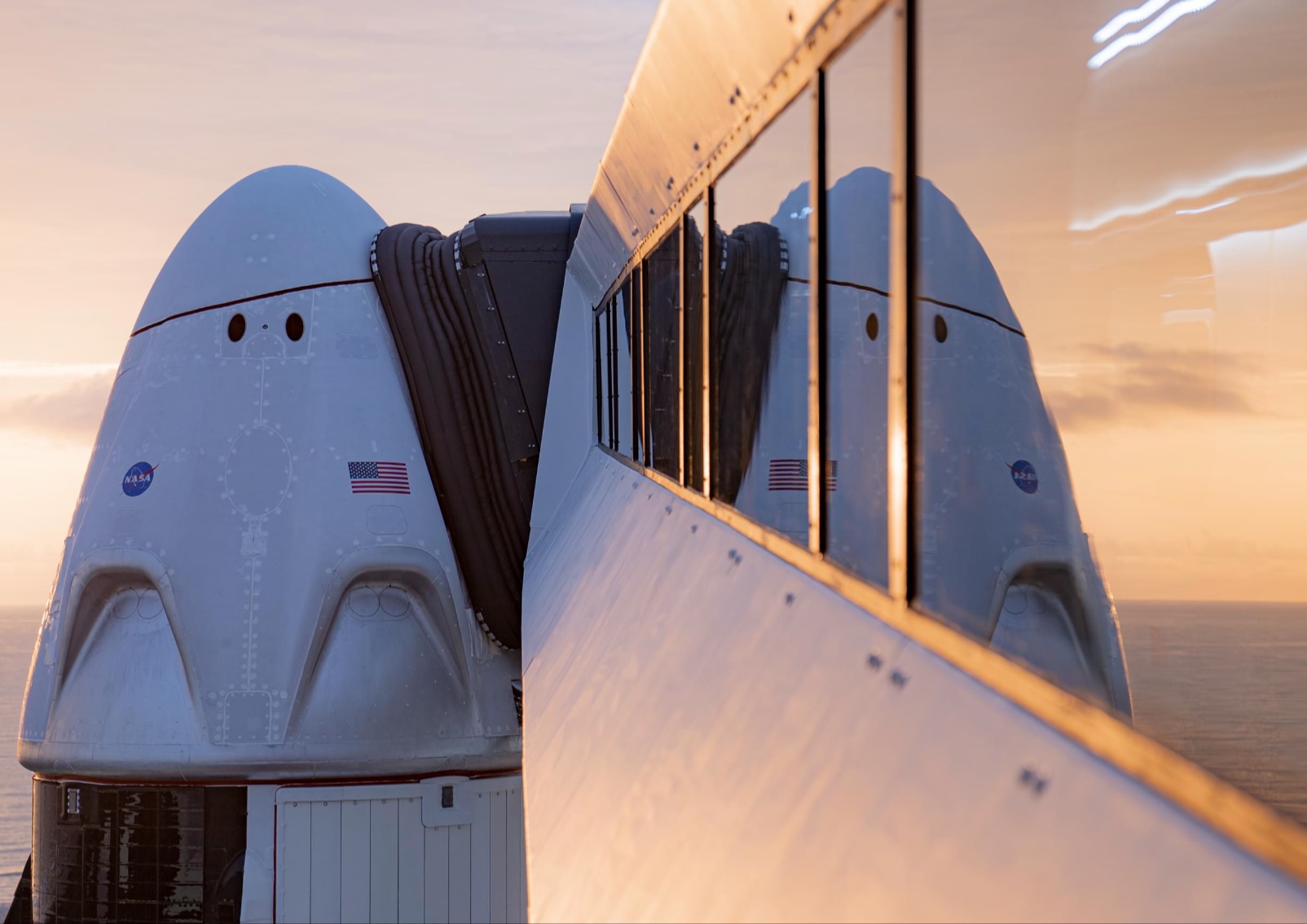
NASA and SpaceX are targeting July 31 for the launch of Crew-11, the next crewed mission to the International Space Station (ISS). The flight will lift off from Launch Complex 39A at Kennedy Space Center in Florida, using the Crew Dragon Endeavour and a Falcon 9 booster.
Crew Dragon Endeavour returns
Crew-11 will be the sixth flight for Endeavour, making it SpaceX’s most experienced crew vehicle to date. According to SpaceX’s director of Dragon mission management, Sarah Walker, Endeavour has already carried 18 astronauts representing eight countries since its first mission with NASA’s Bob Behnken and Doug Hurley in 2020, as noted in an MSN report.
“This Dragon spacecraft has successfully flown 18 crew members representing eight countries to space already, starting with (NASA astronauts) Bob (Behnken) and Doug (Hurley) in 2020, when it returned human spaceflight capabilities to the United States for the first time since the shuttle retired in July of 2011,” Walker said.
For this mission, Endeavour will debut SpaceX’s upgraded drogue 3.1 parachutes, designed to further enhance reentry safety. The parachutes are part of SpaceX’s ongoing improvements to its human-rated spacecraft, and Crew-11 will serve as their first operational test.
The Falcon 9 booster supporting this launch is core B1094, which has launched in two previous Starlink missions, as well as the private Ax-4 mission on June 25, as noted in a Space.com report.
The four-members of Crew-11 are NASA astronauts Zena Cardman and Mike Fincke, as well as Japan’s Kimiya Yui and Russia’s Oleg Platonov.
Tight launch timing
Crew-11 is slated to arrive at the ISS just as NASA coordinates a sequence of missions, including the departure of Crew-10 and the arrival of SpaceX’s CRS-33 mission. NASA’s Bill Spetch emphasized the need for careful planning amid limited launch resources, noting the importance of maintaining station altitude and resupply cadence.
“Providing multiple methods for us to maintain the station altitude is critically important as we continue to operate and get the most use out of our limited launch resources that we do have. We’re really looking forward to demonstrating that capability with (CRS-33) showing up after we get through the Crew-11 and Crew-10 handover,” Spetch stated.
Lifestyle
EV fans urge Tesla to acquire Unplugged Performance for edge in fleet and security industry
Unplugged Performance has built a name for itself by producing performance upgrades for Tesla vehicles.
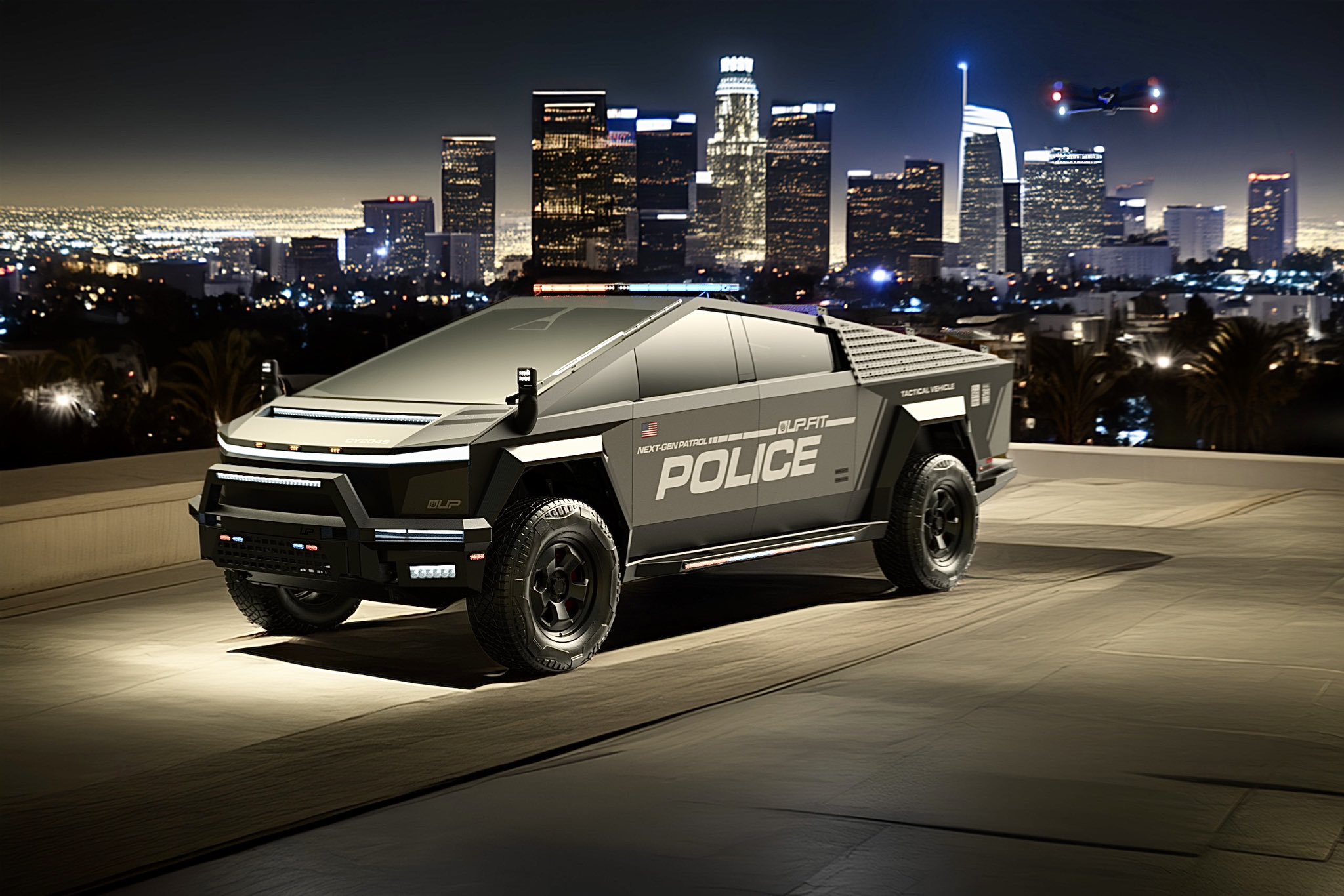
A growing number of Tesla enthusiasts and longtime community voices are calling on the electric vehicle maker to acquire Unplugged Performance, a California-based aftermarket company best known for tuning Tesla vehicles and developing specialized government fleet solutions under its UP.FIT division.
The idea was once considered a niche proposal among EV fans, but it is now gaining serious attention not just as a performance play but as a strategic move to deepen Tesla’s roots in the fleet and security industry.
A strategic fit
Unplugged Performance has built a name for itself by producing performance upgrades for Tesla vehicles, from track-optimized components to visual and aerodynamic upgrades. But in recent years, its UP.FIT division has pivoted toward a more functional future by outfitting Tesla vehicles like Model Ys for police, military, and government use.
That work has sparked growing calls for closer collaboration with Tesla, especially as the EV maker increasingly leans into autonomy, AI, and fleet services as core components of its next chapter.
“I posted this four years ago, but I think it’s more true now than ever,” wrote Whole Mars Catalog, a well-known Tesla investor and FSD Beta tester, on X. “Tesla should buy Unplugged. But not just as a Performance division. What they are doing with UP.FIT unlocks large government and commercial fleet purchases that can improve utilization.”
Tesla fans such as shareholder Sawyer Merritt echoed the sentiment, calling Unplugged a “great fit within Tesla.” adding, “They are literally located directly next to Tesla’s design studio in Hawthorne.”
Enabling the next wave
Supporters of the idea noted that integrating Unplugged into Tesla’s corporate structure could help accelerate the adoption of autonomous technologies in government sectors. With UP.FIT patrol cars already in use across some U.S. police departments, Tesla fans envisioned a future where self-driving Teslas could potentially revolutionize law enforcement, search-and-rescue, and public service logistics.
“Just imagine how autonomous patrol cars could transform policing and bring us into a safer future,” the veteran FSD tester wrote.
The benefits could also extend to Tesla’s existing consumer base. “They also have some incredible products in the works that I think will appeal to many ordinary Tesla drivers — not just those looking for performance or mods. Stuff that’s so good it should have come straight from the design studio next door,” Whole Mars Catalog noted.
Unplugged Performance, founded in 2013, shares not just a product vision with Tesla, but also geography. Its Hawthorne headquarters sits directly adjacent to Tesla’s design studio, and the two companies have maintained a close working relationship over the years. The aftermarket firm has long positioned itself as a “mission-aligned” partner to Tesla.
In response to the recent calls for acquisition, Unplugged Performance acknowledged the support from the community. “Our very existence is to support the Tesla mission with @UpfitTesla and @UnpluggedTesla,” Unplugged CEO Ben Schaffer posted on X. “We love working with Tesla and are grateful for the community’s support since 2013!”
News
Tesla debuts hands-free Grok AI with update 2025.26: What you need to know
All new Tesla vehicles delivered on or after July 12, 2025, will include Grok AI out of the box

Tesla has begun rolling out Grok, an in-car conversational AI assistant developed by xAI, to eligible vehicles starting July 12. The feature marks the most direct integration yet between Elon Musk’s artificial intelligence startup and Tesla’s consumer product lineup, offering drivers hands-free access to a chat-style companion while on the road.
Grok comes pre-installed on new vehicles
According to Tesla’s FAQ page for the feature, all new vehicles delivered on or after July 12, 2025, will include Grok AI out of the box. Owners of older vehicles may gain access through an over-the-air update, provided their vehicle meets a few hardware and software requirements.
Specifically, Grok is currently only supported on Tesla models equipped with an AMD infotainment processor and running vehicle software version 2025.26 and higher. Compatible models include the Model S, Model 3, Model X, Model Y, and Cybertruck. A Premium Connectivity subscription or active Wi-Fi connection is also required.
Tesla notes that additional vehicle compatibility may arrive in future software updates.
Grok’s features and limitations for now
Drivers can engage with Grok using the App Launcher or by pressing and holding the voice command button on the steering wheel. Grok is designed to answer questions and hold conversations using natural language, offering responses tailored to its chosen personality—ranging from “Storyteller” to the more eccentric “Unhinged.”
For fun, Tesla posted a demonstration of Grok likely running on “Unhinged” talking about what it would do to Optimus when they are on a date, much to the shock of the humanoid robot’s official social media account.
It should be noted, however, that Grok cannot currently issue commands to the vehicle itself, at least for now. Traditional voice commands for tasks like climate control, navigation, or media remain separate from Grok as of writing.
The feature is being released in Beta and does not require a Grok account or xAI subscription to activate, although that policy may change over time.
Grok privacy and in-car experience
Tesla emphasizes that interactions with Grok are securely processed by xAI and not linked to a user’s Tesla account or vehicle. Conversations remain anonymous unless a user signs into Grok separately to sync their history across devices.
Tesla has also begun promoting Grok directly on its official vehicle webpages, showcasing the feature as part of its in-car experience, further highlighting the company’s increasing focus on AI and infotainment features on its all-electric vehicles.
-

 Elon Musk2 weeks ago
Elon Musk2 weeks agoTesla investors will be shocked by Jim Cramer’s latest assessment
-

 Elon Musk3 days ago
Elon Musk3 days agoxAI launches Grok 4 with new $300/month SuperGrok Heavy subscription
-

 Elon Musk5 days ago
Elon Musk5 days agoElon Musk confirms Grok 4 launch on July 9 with livestream event
-

 News1 week ago
News1 week agoTesla Model 3 ranks as the safest new car in Europe for 2025, per Euro NCAP tests
-

 Elon Musk1 week ago
Elon Musk1 week agoxAI’s Memphis data center receives air permit despite community criticism
-

 News2 weeks ago
News2 weeks agoXiaomi CEO congratulates Tesla on first FSD delivery: “We have to continue learning!”
-

 Elon Musk2 weeks ago
Elon Musk2 weeks agoTesla scrambles after Musk sidekick exit, CEO takes over sales
-

 News2 weeks ago
News2 weeks agoTesla sees explosive sales growth in UK, Spain, and Netherlands in June


